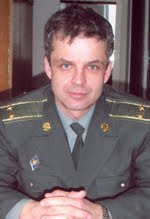There were
several events in the history of Russia that the government did not want
depicted and tried to hide. One of these forbidden pages of history was the
famine that swept the southern part of Russia and the Volga region in 1891-92.
When news of the famine reached other countries, the American people collected
and sent to Russia five steamers with food for the starving population. The
main reason for the famine of 1891-92 was the state’s agricultural policy. In
order to replenish the treasury with income from agricultural products, Russia
exported large quantities of wheat. In 1891, 3.5 million tons of grain were
exported from the country, and in the following year (1892), when famine was
raging in the Russian Empire, the Russian government and entrepreneurs sold 6.6
million tons of grain to Europe, which was almost twice as much as the previous
year.
Emperor
Alexander III categorically denied the existence of famine in Russia,
declaring: “I do not have hungry people, there are only those affected by crop
failure.” The situation in the country was catastrophic, and this terrible news
swept Europe and reached America. The American public, led by William Edgar,
editor of the North Western Miller weekly, offered humanitarian assistance to
Russia. However, the emperor did not grant permission for the aid to enter
Russia. Only after repeated requests did he allow the donated food to feed the
starving Russian people.
“Aid Ship”, Ivan Aivazovsky, 1892
For several
months organizations in the northern U.S. states and the American Red Cross were
engaged in the delivery of humanitarian aid to the ports of America, and at the
beginning of 1892 the first two ships loaded with flour and grain sailed to
distant Russia. From early spring to mid-summer 1892 five steamers with food
arrived in Russia with more than 10,000.00 tons of food. The cost of the
delivered assistance was estimated at $ 1 million.
“Distribution of Food”, Ivan Aivazovsky, 1892
Ivan Aivazovsky,
a Russian Romantic painter who is considered one of the greatest masters of
marine art, witnessed the arrival of the ships with the long-awaited cargo,
which helped to improve the catastrophic situation in the country. In the
Baltic ports of Liepaja and Riga the steamboats were met by welcoming
orchestras. Wagons, decorated with American and Russian flags, and loaded with
food set off to distribute their cargo to the needy, This event impressed the artist so much, that he produced two paintings: “Aid Ship” and “Distribution of
Food”.
The paintings
were not allowed to be exhibited in any of Russia’s galleries. Emperor
Alexander III was annoyed by the mood of the people shown by the artist in his
paintings. Moreover, the paintings demonstrated the emperor’s inability to
rule the country and causing the famine in Russia. During a visit to America in
1892-1893, Ivan Aivazovsky donated his canvases to the Corcoran Gallery of Art
in Washington.
In 1962, when
the USA and the USSR were on the verge of a nuclear war because of the
deployment of Soviet missiles in Cuba, the story about America’s assistance
during the 1892-1993 famine resurfaced in American newspapers Trying to find
examples of US-Russian cooperation in the past, First Lady Jacqueline Kennedy
borrowed Ivan Aivazovsky paintings from the Corcoran Gallery of Arts for a
conference room in the White House. Against this background, the president and
his press secretaries made statements on their progress in sorting out
relations with Moscow. The Aivazovsky paintings, the Americans argued, were a
reminder of past fraternal feelings between the two peoples.
In 1979, the
paintings became part of a private collection in Pennsylvania, and were not
accessible to the public for many years. However, at a 2008 Sotheby’s auction,
both of Aivazovsky’s historical paintings were sold for $2.4 million to a
philanthropist, who immediately transferred them to the Corcoran Gallery of
Arts. In conclusion, it should be noted that these paintings by Ivan
Aivazovsky, painted in 1892, have never been allowed to be shown in modern
Russia.













